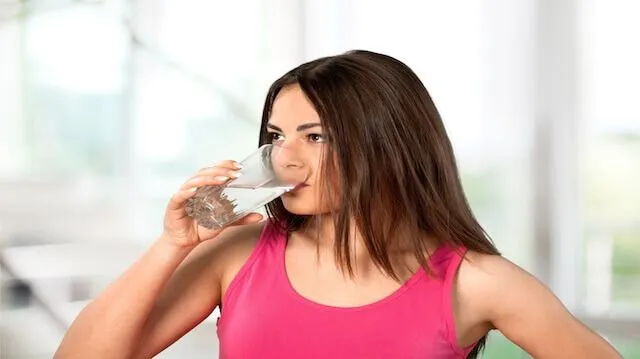
- Share on Facebook144
- Share on Pinterest
- Share on Twitter
It is always important to be mindful of not getting dehydrated. We know dehydration causes many unpleasant side effects. However, you need to know that there is such a thing as overhydration, and it can be dangerous too.
Overhydration is more dangerous than dehydration
A report on the dangers of overhydration was compiled by sports medicine experts and presented at the 2015 CrossFit Conference on Exercise-Associated Hyponatremia in California.
In the report, sports medicine experts present their view that overhydration actually poses more danger than dehydration.
Drink only when thirsty not merely to push fluid intake
“The risks associated with dehydration are small,” said lead report author Dr. James Winger. “No one has died on sports fields from dehydration, and the adverse effects of mild dehydration are questionable. But athletes, on rare occasions, have died from overhydration.”
For a long time, athletes have been urged to drink large quantities of water in order to avoid muscle cramping and heat stroke. According to Dr. Winger, dehydration does not cause heat stroke or muscle cramps. This report comes as part of a movement to update recommendations and guidelines regarding sports-related hydration.
Many sports medicine experts are now urging athletes to only seek sources of hydration when they feel thirsty.
Exercise-associated hyponatremia can be life-threatening
A condition known as exercise-associated hyponatremia (EAH), or overhydration, causes the kidneys to become overwhelmed. When this happens the cells swell up and they are unable to produce the needed amounts of sodium. EAH can occur anytime during an athletic performance or up to 24 hours afterwards.
As the researchers indicated in their report, “From a practical standpoint, it is the smaller individuals and those who participate at a slower pace and drink more than sweat losses that are more likely to develop EAH. Although the incidence of women experiencing EAH is greater than that of men, adjusted for BMI and racing time, the apparent sex difference is not statistically significant.”
According to Dr. Tamara Hew-Butler, this condition can be life-threatening. “The evidence is firm that every single death from exercise-associated hyponatremia is avoidable,” said Hew-Butler. “We can consciously control the amount of fluid that enters our body and must reconsider, re-educate and reinforce appropriate fluid intake and intravenous fluid guidelines.”
Use thirst as a guideline for when to drink fluids
“Using the innate thirst mechanism to guide fluid consumption is a strategy that should limit drinking in excess and developing hyponatremia while providing sufficient fluid to prevent excessive dehydration,” wrote the researchers.
It is believed that athletes could lose up to three percent of body weight from water loss while participating in a competition and that the slight dehydration would not interfere with their athletic performance.
 Researchers wrote in their report, “Since drinking fluid volume above sweat and urinary losses during and after activity is the main pathophysiological mechanism underlying asymptomatic, symptomatic and fatal cases of EAH, prevention is dependent on drinking less. Thirst should provide adequate stimulus for preventing excess dehydration and markedly reduce the risk of developing EAH in all sports.”
Researchers wrote in their report, “Since drinking fluid volume above sweat and urinary losses during and after activity is the main pathophysiological mechanism underlying asymptomatic, symptomatic and fatal cases of EAH, prevention is dependent on drinking less. Thirst should provide adequate stimulus for preventing excess dehydration and markedly reduce the risk of developing EAH in all sports.”
Early symptoms can be overlooked
Early stage warning symptoms of overhydration include nausea, headache, vomiting, confusion, and disorientation. Unfortunately, these signs are often overlooked, which can lead to more serious side effects. These more serious symptoms include muscle cramping, muscle spasms and weakness, unconsciousness, seizures, and coma.
When participating in any type of physical exertion, it is best to drink when thirsty, during and after. If you have symptoms and are concerned, it never hurts to have them checked.
—Kirsty Toth
Kristy is a freelance writer with more than twenty years of print and digital media writing experience and over seven years of university study in journalism, broadcasting, and mass communications. She specializes in health and wellness, alternative healing methods, news, the environment, and lifestyles. She currently resides in the Upper Peninsula of Michigan with her family and pets.
Sources:
http://journals.lww.com/cjsportsmed/Fulltext/2015/07000/Statement_of_the_Third_International.2.aspx
http://www.upi.com/Health_News/2015/06/29/Athletes-best-bet-is-to-only-drink-when-thirsty/5351435610372/
http://www.activebeat.com/health-news/is-overhydration-more-dangerous-than-dehydration
http://www.healthline.com/health/overhydration#Prevention7
- Share on Facebook144
- Share on Pinterest
- Share on Twitter

